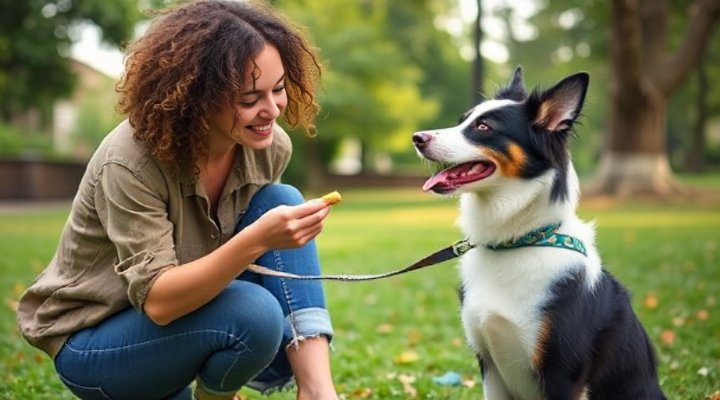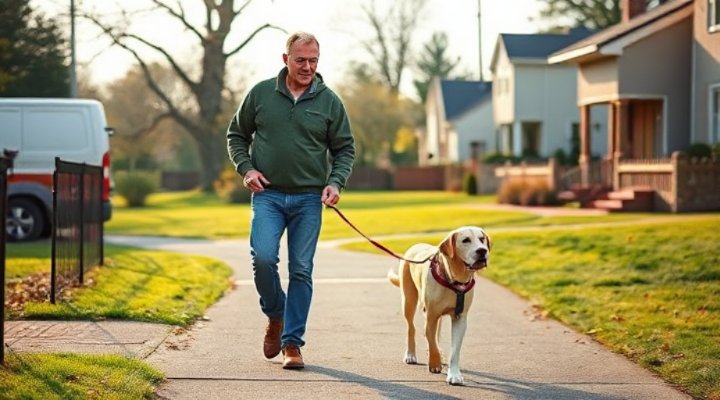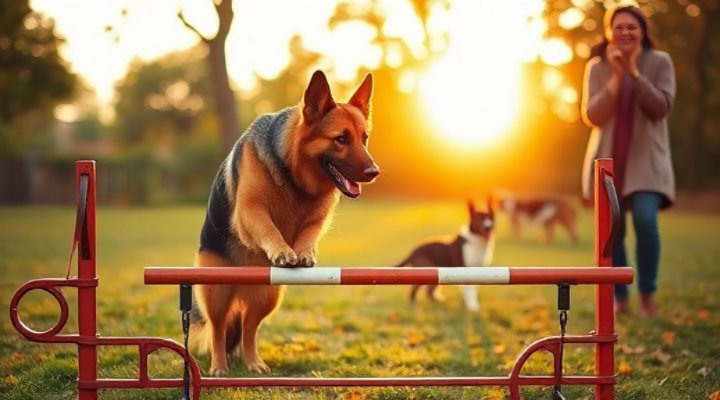Dog training tips are invaluable for creating a harmonious relationship between you and your canine companion. Whether you’re dealing with a rambunctious puppy or an older dog with established habits, scientifically proven training methods can make all the difference in your success.

The Science Behind Effective Dog Training
Modern dog training has evolved significantly from the outdated dominance-based methods. Research from institutions like the American Veterinary Society of Animal Behavior shows that positive reinforcement is not only more effective but also strengthens the bond between dog and owner. In other words, rewarding good behavior works better than punishing bad behavior.
For example, when teaching your dog to sit, immediately rewarding the desired behavior with a treat or praise creates positive associations. Consequently, your dog will be more likely to repeat that behavior. This principle applies to everything from basic commands to solving dog anxiety issues.

Essential Dog Training Tips for Beginners
If you’re new to dog training, start with these fundamental tips:
- Keep sessions short: Dogs, especially puppies, have limited attention spans. Five to ten minute sessions several times a day work best.
- Be consistent: Use the same commands and reward system every time. Inconsistency confuses dogs and slows progress.
- Timing is everything: Reward desired behaviors within 1-2 seconds so your dog makes the correct association.
- Make it fun: Training should be enjoyable for both of you. If you’re frustrated, your dog will be too.
As a result of following these basic principles, you’ll see faster progress and a happier, more obedient dog. For more detailed guidance, check out our article on understanding your dog like an expert.

Advanced Training Techniques
Once your dog has mastered basic commands, you can move on to more advanced training. Here are some pro tips:
- Proofing behaviors: Practice commands in different environments with increasing distractions.
- Shaping complex behaviors: Break down tricks into small steps, rewarding incremental progress.
- Using life rewards: Incorporate everyday activities like meals or walks as training opportunities.
Meanwhile, remember that every dog learns at their own pace. Some may excel at agility training while others shine at obedience. The key is to tailor your approach to your dog’s individual personality and learning style.

Common Training Challenges and Solutions
Even with the best dog training tips, you’ll likely encounter some challenges. Here’s how to handle common issues:
Leash Pulling
Instead of jerking the leash, stop walking when your dog pulls. Only proceed when the leash is loose. This teaches that pulling gets them nowhere while loose leash walking gets them where they want to go.
Jumping Up
Ignore the jumping (turn away, no eye contact) and only give attention when all four paws are on the ground. Consistency from all family members is crucial.
Excessive Barking
First identify the cause (boredom, alert, anxiety), then address the root issue. Teaching a “quiet” command can help manage the behavior.
For more specialized issues, consider consulting a professional or reading our guide on finding the right dog trainer.

Training Dogs at Different Life Stages
Effective dog training tips vary depending on your dog’s age:
Puppies (8 weeks – 6 months)
Focus on socialization, bite inhibition, and basic commands. Puppy classes can be invaluable during this critical period.
Adolescents (6 months – 2 years)
Continue reinforcing basics while adding more advanced commands. Be patient during this often challenging phase.
Adult Dogs (2+ years)
Older dogs can certainly learn new tricks! Focus on mental stimulation and refining existing skills.
Senior Dogs
Adapt training to physical capabilities. Short, gentle sessions focusing on mental exercise are ideal.
Remember, whether you’re working with a young puppy or an older rescue, the principles of positive reinforcement remain the same. The American Kennel Club offers excellent resources for training dogs at all life stages.
Related Keywords
dog obedience training, puppy training tips, positive reinforcement dog training, how to train a dog, dog behavior training, crate training dogs, leash training puppies, dog training commands, professional dog training, dog training techniques
